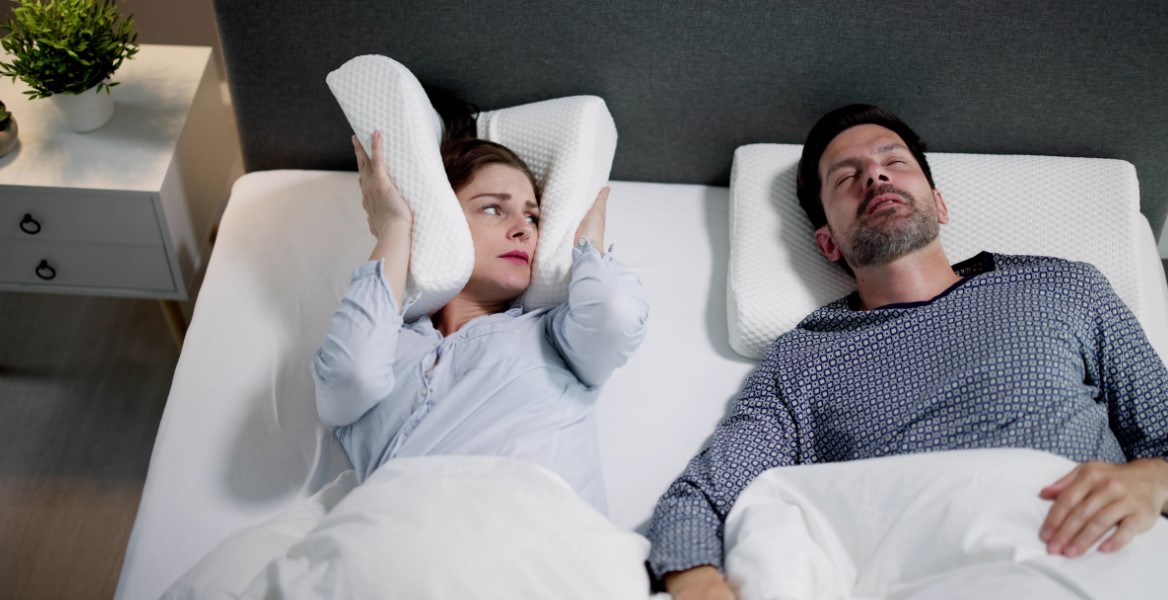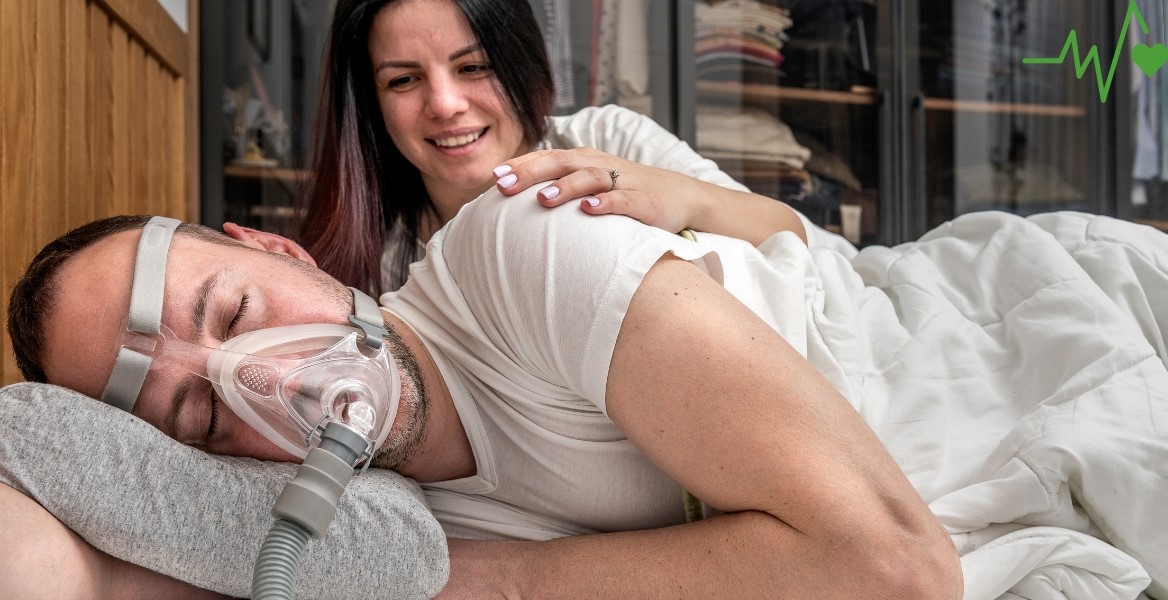Sleep apnea is more than just a sleep disturbance; it’s a serious condition that affects millions worldwide, often without them even realizing it. Characterized by repeated interruptions in breathing during sleep, sleep can lead to severe health issues if left untreated, including heart disease, high blood pressure, and stroke. The constant struggle to breathe disrupts your sleep cycle, leaving you exhausted and drained, no matter how long you’ve been in bed. But there’s hope. Understanding sleep apnea and recognizing the signs early can lead to effective treatments that not only improve your quality of sleep but also enhance your overall well-being. From lifestyle changes and continuous positive airway pressure (CPAP) therapy to advanced surgical options, there are numerous ways to manage this condition.

Sleep Apnea: Understanding, Managing, and Overcoming a Silent Threat
Sleep is a widespread yet often undiagnosed condition that affects millions of people globally. This sleep disorder, characterized by repeated interruptions in breathing during sleep, can have far-reaching consequences on one’s health, well-being, and quality of life. The condition is divided into three main types: obstructive sleep apnea (OSA), central sleep apnea (CSA), and complex sleep syndrome, each with distinct causes and implications. Visit here!
What is Sleep Apnea?
Sleep is a sleep disorder where breathing repeatedly stops and starts during sleep. These interruptions, known as apneas, can last from a few seconds to minutes and may occur 30 times or more an hour. When breathing stops, the body is briefly jolted out of a deep sleep phase, leading to fragmented and poor-quality sleep. The two primary types of sleep are:
- Obstructive Sleep Apnea (OSA): The most common form, OSA occurs when the muscles in the back of the throat fail to keep the airway open. This blockage can be partial or complete, leading to snoring, choking, or gasping sounds as the individual struggles to breathe.
- Central Sleep Apnea (CSA): Unlike OSA, CSA occurs when the brain fails to send proper signals to the muscles responsible for controlling breathing. This type of sleep is less common and often linked to underlying medical conditions such as heart failure or stroke.
- Complex Sleep Apnea Syndrome: Also known as treatment-emergent central sleep, this is a combination of both obstructive and central sleep.
Causes of Sleep Apnea
The causes of sleep vary depending on the type, but several risk factors can increase the likelihood of developing the condition:
- Obstructive Sleep Apnea:
-
- Excess Weight: Individuals who are overweight or obese are at higher risk due to the fatty deposits around the upper airway, which can obstruct breathing.
- Neck Circumference: A thicker neck can lead to a narrower airway, increasing the risk of OSA.
- Age: OSA is more common in older adults, as muscle tone decreases with age.
- Gender: Men are more likely to develop OSA, though the risk increases for women after menopause.
- Family History: A family history of sleep increases the risk, suggesting a genetic predisposition.
- Smoking and Alcohol Use: Smoking and alcohol relax the muscles in the airway, worsening the condition.
- Nasal Congestion: Chronic nasal congestion, whether from allergies or anatomical issues, can contribute to OSA.
- Central Sleep Apnea:
-
- Heart Disorders: Conditions like congestive heart failure can lead to CSA.
- Stroke: A history of stroke increases the risk of CSA.
- High Altitudes: Being at a high altitude can cause CSA due to lower oxygen levels.
- Opioid Use: Certain medications, especially opioids, can disrupt the brain’s signals that control breathing.
Symptoms of Sleep Apnea
Sleep symptoms can range from mild to severe and often go unnoticed by the individual, as they occur during sleep. Key symptoms include:
- Loud Snoring: One of the most common signs, particularly with OSA, is loud, chronic snoring.
- Gasping for Air During Sleep: Individuals with sleep may wake up suddenly, gasping for air or choking.
- Daytime Fatigue: Due to disrupted sleep, those with sleep often experience excessive daytime sleepiness, leading to difficulty concentrating and increased risk of accidents.
- Morning Headaches: Frequent morning headaches can result from low oxygen levels and disrupted sleep.
Diagnosing Sleep Apnea
Proper diagnosis of sleep is essential for effective treatment. Several methods are used to diagnose the condition:
- Medical History and Physical Examination: A healthcare provider will review your symptoms, medical history, and family history and may perform a physical examination, focusing on the throat, mouth, and neck.
- Sleep Study (Polysomnography): The most comprehensive test for diagnosing sleep is a sleep study, typically conducted overnight in a sleep lab. This test monitors various body functions, including brain activity, eye movement, heart rate, breathing patterns, oxygen levels, and muscle activity during sleep.
- Home Sleep Test (HSAT): For some individuals, a simplified version of the sleep study may be conducted at home. This test typically monitors heart rate, oxygen levels, airflow, and breathing effort.
- Oximetry: A less comprehensive test that measures oxygen levels in the blood through a device worn on the finger. While not a definitive test for sleep, oximetry can indicate the presence of the condition.
- Multiple Sleep Latency Test (MSLT): This test is used to measure excessive daytime sleepiness and involves taking several naps throughout the day to assess how quickly the individual falls asleep.
Treatment Options for Sleep Apnea
Treatment for sleep varies depending on the severity of the condition and the type of sleep. Common treatment options include:
- Lifestyle Changes:
-
- Weight Loss: Reducing excess weight can significantly alleviate symptoms of OSA by decreasing the pressure on the airway.
- Exercise: Regular physical activity can help improve sleep quality and reduce the severity of sleep.
- Sleeping Position: Sleeping on your side rather than your back can help keep the airway open.
- Avoiding Alcohol and Smoking: Reducing or eliminating alcohol and tobacco use can improve symptoms.
- Continuous Positive Airway Pressure (CPAP):
-
- CPAP Therapy: The most common treatment for OSA, CPAP involves wearing a mask over the nose and/or mouth during sleep. The mask is connected to a machine that delivers a continuous stream of air, keeping the airway open.
- CPAP Alternatives: For those who find CPAP uncomfortable, alternative devices like BiPAP (Bilevel Positive Airway Pressure) or APAP (Automatic Positive Airway Pressure) may be recommended.
- Oral Appliances:
-
- Mandibular Advancement Devices: These custom-made devices help keep the airway open by moving the lower jaw forward during sleep.
- Tongue-Retaining Devices: These devices hold the tongue in a forward position, preventing it from blocking the airway.
Lifestyle Adjustments for Managing Sleep Apnea
In addition to medical treatments, making lifestyle changes can significantly impact the management of sleep:
- Healthy Diet and Weight Management:
-
- Balanced Diet: Eating a diet rich in fruits, vegetables, whole grains, and lean proteins can help maintain a healthy weight and reduce the severity of sleep.
- Portion Control: Monitoring portion sizes and avoiding high-calorie, processed foods can aid in weight loss efforts.
- Regular Exercise:
-
- Cardiovascular Exercise: Activities like walking, jogging, swimming, and cycling can improve overall fitness and help reduce sleep symptoms.
- Strength Training: Building muscle can increase metabolism and support weight loss, further alleviating sleep.
- Sleep Hygiene:
-
- Consistent Sleep Schedule: Going to bed and waking up at the same time each day helps regulate the sleep-wake cycle.
- Creating a Relaxing Bedtime Routine: Incorporating activities like reading, taking a warm bath, or practicing relaxation techniques can promote better sleep.
- Optimizing the Sleep Environment: Ensuring a comfortable mattress, pillows, and a dark, quiet room can improve sleep quality.

Preventing Sleep Apnea
While some risk factors for sleep, such as age and genetics, cannot be controlled, there are steps you can take to reduce your risk of developing the condition:
- Maintain a Healthy Weight: Keeping your weight within a healthy range can significantly reduce the risk of developing OSA.
- Exercise Regularly: Engaging in regular physical activity can help maintain a healthy weight, improve cardiovascular health, and reduce the severity of sleep.
- Avoid Smoking and Excessive Alcohol Use: Both smoking and excessive alcohol consumption can increase the risk of sleep by relaxing the airway muscles.
- Treat Nasal Congestion: Managing allergies and nasal congestion can improve airflow and reduce the likelihood of airway obstruction.
- Sleep on Your Side: Adopting a side-sleeping position can help keep the airway open and reduce the risk of apneas.
Conclusion
Sleep apnea is a serious condition that requires attention and proper management to prevent its potentially life-threatening consequences. By understanding the causes, recognizing the symptoms, and seeking appropriate treatment, individuals can regain control of their sleep and overall health. Whether through lifestyle changes, medical treatments, or surgical interventions, there are numerous options available to manage sleep effectively. As research continues to advance, the future holds promise for even more innovative solutions, offering hope to those affected by this condition. Don’t let sleep rob you of your rest and well-being—take the first step towards a healthier, more restful life today.




